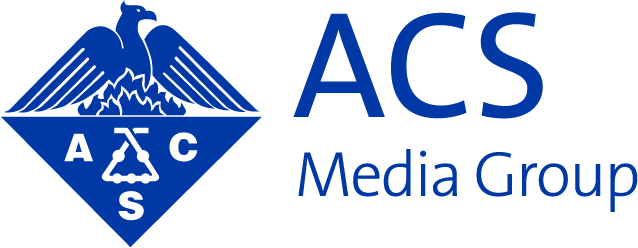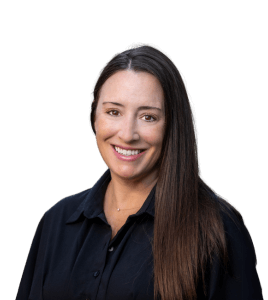There is little doubt that the digital age has had a major impact on the scientific community. The sheer volume of information, technological capabilities, and available goods and services advertised online has made access to helpful tools virtually limitless. While this creates significant opportunity, it’s a double-edged sword for companies with a valuable product who may struggle to capture consumer attention amidst all the noise.
As marketers, it’s our job to help guide consumers through the sea of search results to scientific ports of refuge. How?
Like scientists, marketers need well-defined media planning steps, bound by empirical information, to ask the right questions and succeed at their job. This approach has significant parallels to the scientific method: The work is question-driven and empirically validated.
To highlight this point, we have broken down steps to a successful media buying strategy alongside the classical steps of the scientific method. Whether or not you have a research background, our aim is to crystallize the protocol needed for scientific marketing success.
Step 1: Ask a question
The first step of a paid media plan – and a scientific experiment – is to define why you are doing it and what the goal of the campaign is.
Clearly define what success is and how you’ll measure it. Without this, the project will lack direction – so find one and stick to it! Additionally, another vital starting question that will impact each of these steps is: Who is your campaign’s audience?
Step 2: Perform background research
Before forming a testable hypothesis, you must learn about the field at-large and understand what the expectations are for your campaign. This background information will guide everything from the media channels you choose to the publications you spend with.
Here are the areas to focus on:
Further define your audience.
Is this a U.S. campaign or do you need to be thinking global?
What are their general demographics? Are you marketing to internet-savvy millennials or an older generation?
Are you targeting influencers or the person making the purchase?
Analyze your business and consider your intended Return-on-Investment (ROI).
What kind of business are you really?
Do you have e-commerce capabilities or a more traditional sales model? Has the pandemic crisis shifted these metrics? Why or why not?
The answer to these questions will determine what metrics for success look like, whether that’s a purchase or introductory Zoom call.
What is your advertising budget and timeline?
This is clearly an important departure point for planning where and how you will spend your advertising dollars. Beyond that, the quarterly budget should drive your program in a way that ensures you have statistically significant datasets at the end. A/B testing is great – but if your money is spread thin, too many buckets will compromise the validity of your results.
For tips on how you should be thinking about your budgets during a crisis, read our latest Q&A with a science marketing expert.
Step 3 – Construct a hypothesis
All principal investigators will tell their students and postdocs the same thing; You must have a hypothesis before you start testing. Ad buying is no different. Develop a working hypothesis that makes an informed prediction of what will occur based on a defined approach and testable question; “If I use X channel on Y vendor, then I will reach Z goal.” The hypothesis needs to be formulated upfront so you can begin measuring against your goals from day one of experimentation. Here are two main questions you should ask to help inform your hypothesis.
What types of protocols are you adopting? E.g. What channel(s) do you intend to use?
Display ads are better for awareness and reach of a product – such as rebranding and brand recall.
Email ads or newsletter sponsorships are better for on-page conversion rate
Paid search ads work well for e-commerce transactions
For additional channel targeting tips, learn how to utilize Geotargeting in your selected channel(s) to localize ad efforts.
What instrumentation can best perform your protocol? E.g. What vendor(s) do you intend to use?
What kind of institution is the vendor? Is it a publication that owns their audience or a marketplace that’s meant for scale?
What attracts the audience to the vendor? Edification, field-specific information, directory listings, reviews/testimonials, personal insights, etc.?
How do they segment their audience? And can they segment their audience to target specific groups or behaviors?
Step 4 – Test your hypothesis through experimentation
All scientists must carefully develop an analytical method that provides data to help you answer your question. This is essential for determining the functional success of your ad campaign, which will need to be measured against key performance indicators (KPIs). Just like how flow cytometry experiment relies on the quality/selection of an appropriate antibody towards your analyte, you must have a measurement strategy prior to running the ad. If not, you will have an ad; but you won’t know if it works.
In addition to this, focus on single variables. As with science, having too many variables complicates analysis and dilutes your dataset/budget.
This list covers potential pain points that can muddy the results of your experiment:
- Undefined primary and secondary KPIs (i.e. cost-per-lead or page impressions). Think back to your goal to help set these.
- An ineffective landing page that doesn’t have a well-defined call-to-action (CTA) that drives a desired action (see step 2).
- Tracking and analytics that don’t measure your KPIs . Be sure to track on-page actions with your tag and analytics software (i.e., Google Tag Manager and Google Analytics)
- Partnering with a publication who doesn’t provide total impressions (eyeballs on the ad) and the click-through rate.
For digital marketers these days, it’s hard to run an experiment without A/B testing. At least, if you have the budget! So if you do intend to a/b test your ad, divide your budget in half (two ads, A and B). Remember that A/B testing requires enough volume to get statistical significance. There are also a number of tools you can adopt to help with your experiment like AdEspresso for Facebook, Instagram, and Google).
Step 5 – Evaluate the procedure’s efficacy
With any scientific study, you need to check that the procedure can indeed confirm or deny your hypothesis. Often, scientists rely on internal checks to confirm that experiment is functioning as expected and that their data is being appropriately collected. In science marketing, this amounts to ensuring that your analytic data is being collected properly and generally makes sense.
What does that look like? Check-in at predefined points to view the data, but don’t overdo it. Until the full experiment has been run, you don’t always want to start performing serious analysis or making conclusions.
As a general rule, you’ll need at least three months of analytics to spot significant patterns and trends.
(One common exception to this paradigm is social media advertisements. Since social media can generate views and results at a faster clip, you should pay closer attention to its performance in shorter time spans (weeks to ~one month), making ad or audience tweaks as needed to address deficiencies.)
While pilot experiments can work, they are challenging in both marketing and the sciences if they lack the statistical power required to generate meaningful results. That said, you may have a situation where you or a client wants to generate a suite of ads to accomplish the same goal. In this case, you can pilot the work with an individual representative ad and evaluate its success before using the same measurement strategy on the rest. If you had enough resources and elected to A/B test, this approach can assist by providing a framework to more directly compare what works with what didn’t.
Step 6 – Analyze the results and draw conclusions
With the campaign complete and the experiment over, it’s time to analyze the data with respect to the KPI and the goal. The key question to ask here is: “Did the KPI indicate that the project goal was met?” If so, your hypothesis was confirmed (nice job!) and the project was a success. If not, some portion of your hypothesis failed. However, the good news is that with this approach, you have clear variables to test and actions to take next to try again. “Failure” is information, after all, and that’s a positive way to help inform your next campaign.
Return to step 3 and modify your statement by reconsidering the vendor, channel, landing pages, and any other relevant variables. Look at the data to see if you can identify which area to focus on first. For example, did the campaign generate a large amount of landing page views, but no leads? Then, focus on making your edits to your landing page to increase conversions and drive better lead generation.
Step 7 – Communicate your findings
Regardless of the outcome, it is important to communicate your findings. In the scientific community this would come in the form of a presentation or publication; in marketing you report back to your team and/or client. Honesty is the only way to succeed long term, so try not to sugar-coat or misrepresent the final results.
Considering the parallels between data-driven marketing and science can give your marketing teams a competitive edge as you plan a new media buying strategy. As a final note, remember that forethought and planning go a long way towards ultimate success, so you don’t need to jump into ad development immediately. Doing so often delays you, rather than speeds you up. Similarly, scientists are fond of saying, “a day in the library saves a week at the bench.” Keep that concept as food for thought during your next ad project!


















